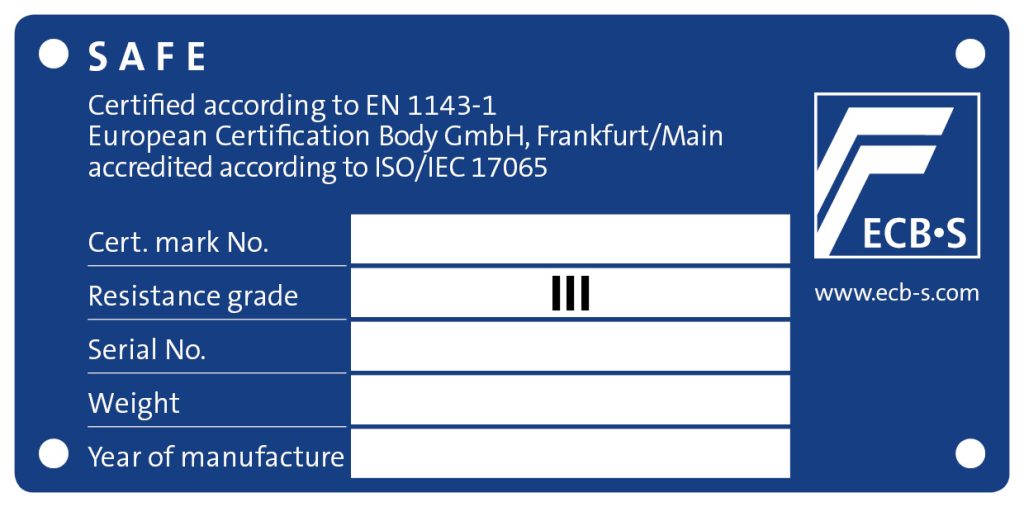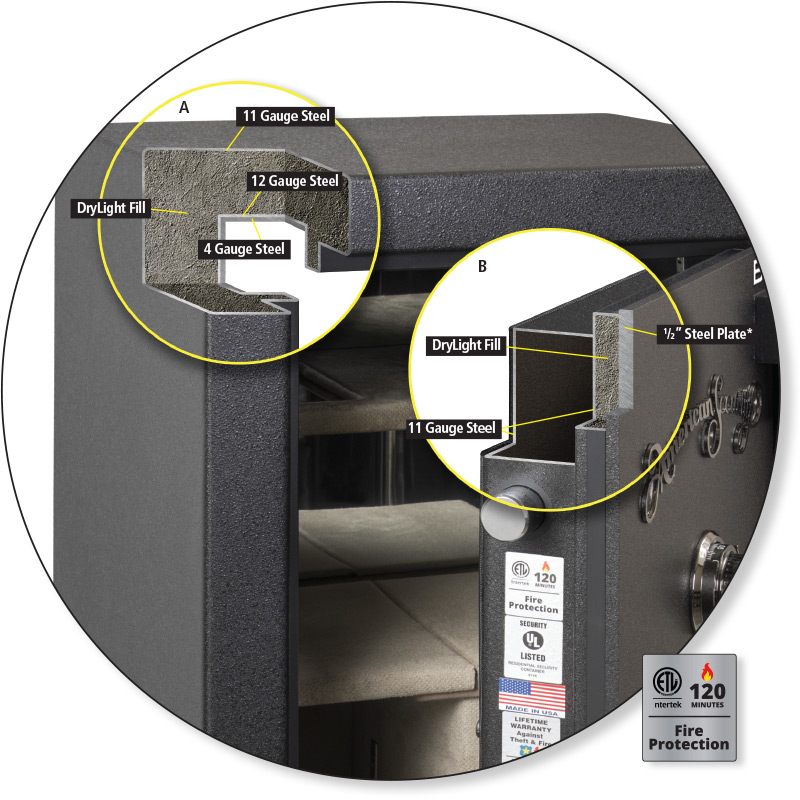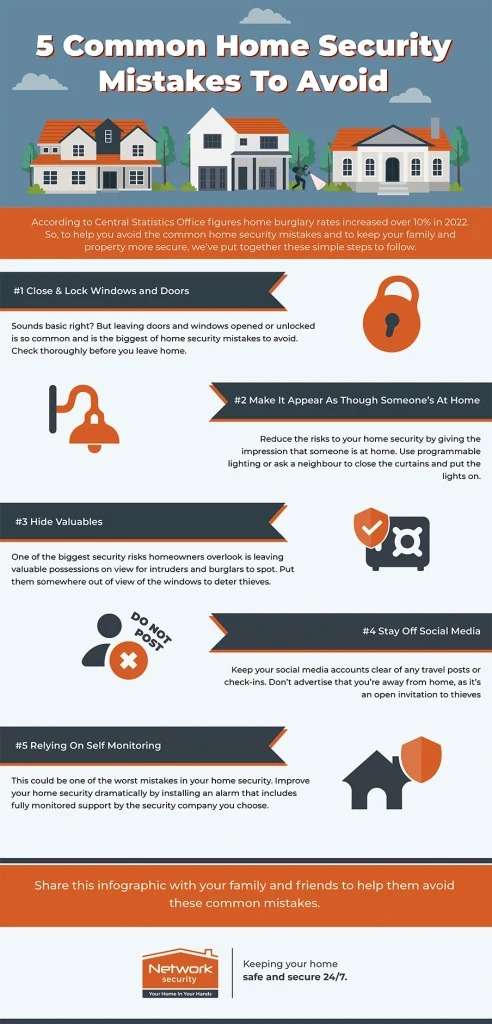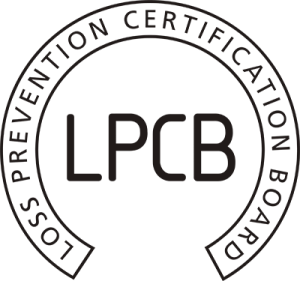🔥 Why Safe Ratings Matter More Than Ever in 2025
November 27, 2025


Safe Insurance Ratings UK: The Complete 2025 Guide to Euro Grades, Cash Limits and Business Requirements
Safe insurance ratings matter more than most business owners realise. A safe is not simply a locked metal box. It is an insurance instrument, a compliance requirement, and a critical defence against theft, fire, and operational loss. Yet across the UK, thousands of businesses unintentionally violate their insurance policies because they store cash, jewellery, documents or digital media in a safe that is not the correct Euro Grade or fire rating.
This long-form guide explains every major factor: Euro Grades, cash limits, valuables limits, installation rules, industry requirements, fire protection standards, certification bodies, and the real reasons insurers deny claims. It also includes practical checklists and examples so you can make informed decisions immediately.
What Safe Insurance Ratings Actually Mean
Safe insurance ratings determine how much cash or valuables an insurer will cover when stored inside a certified safe. These ratings are based on the safe’s resistance to forced entry, structural integrity, locking mechanism strength, and the results of destructive testing under the EN 1143-1 European Standard.
Insurers rely on these ratings because they offer a consistent, measurable way to determine how secure a safe really is. Without proper certification, insurers class a safe as an “unrated box”, even if it feels solid or heavy. This misunderstanding is one of the most common reasons businesses experience rejected claims.
A safe is not considered compliant unless it is the correct Euro Grade, correctly installed, and certified by a recognised body such as AiS, LPCB or ECBS.

Understanding Euro Grades (EN 1143-1)
Euro Grades classify safes from Grade 0 to Grade VI. These grades indicate how resistant the safe is to physical attacks using drills, cutting tools, thermal tools, pry bars, hydraulic equipment, and timed entry techniques. During the EN 1143-1 test, engineers attempt to break into the safe under strict laboratory conditions. Each method contributes to a score of Resistance Units (RU), which determines the final Euro Grade.
Higher grades represent significantly higher attack resistance. This correlates directly to higher cash and valuables insurance limits. Businesses must select the correct grade not for convenience, but because insurers require specific minimum grades based on the risk profile of the premises.
| Euro Grade | Cash Rating | Valuables Rating | Typical Use |
|---|---|---|---|
| Grade 0 | £6,000 | £60,000 | Small business standard, home office storage |
| Grade I | £10,000 | £100,000 | Most common business safe for retail and offices |
| Grade II | £17,500 | £175,000 | Larger retail, sites with higher cash turnover |
| Grade III | £35,000 | £350,000 | Jewellers and high-security commercial use |
| Grade IV+ | £60,000+ | £600,000+ | Banks, bullion, high-risk government sites |
The valuables rating is typically ten times the cash rating. This ratio is widely adopted by UK insurers because valuables such as jewellery are more compact and can be stored more densely, making them easier to steal in large quantities unless properly secured.
The Difference Between Cash and Valuables Ratings
Understanding the difference between cash and valuables ratings is essential. Cash is measured at face value, while valuables are insured at a multiplier because they represent a higher risk per volume of space. For example, a watch worth £8,000 occupies far less volume than £8,000 in cash. Properly assessing what you store prevents insurers from rejecting claims based on improper classification.
If your business handles jewellery, electronics, or controlled drugs, you should evaluate the valuables rating as carefully as the cash limit. Many businesses unknowingly exceed their valuables limit, even if the cash limit appears compliant.
Fire Ratings: A Separate and Often Misunderstood Standard

Euro Grades only measure burglary protection. They do not measure fire resistance. For fire protection, safes must be certified under EN 1047-1 or similar standards, which assess how well a safe protects its contents from heat, flames, humidity, and collapse shock.
Fire ratings generally fall into four categories: 30, 60, 90 and 120 minutes. The correct fire rating depends on what you store. Paper needs to stay below 177°C, while digital media must remain under 55°C. This is why dedicated data safes exist—they offer the moisture and temperature control required to protect sensitive files and devices.
Safe insurance ratings UK. Industry Requirements Across the UK
Different industries have very different safe requirements. Some require specific Euro Grades, while others require fire-tested document safes or drug cabinets compliant with Home Office regulations. Below is the most detailed breakdown available for UK businesses.
Retail and Hospitality
Retail premises typically handle fluctuating cash volumes and therefore require safes that match their highest potential cash holding. Weekend cash build-up, for example, can exceed weekday levels, and insurers base their assessments on your maximum holding rather than your average.
- Small retail: Grade 0
- Medium turnover: Grade I
- High turnover: Grade II
- CCTV monitoring of safe area recommended
- Time-delay locks recommended for robbery prevention
Jewellers and High-Value Retail
Jewellery, precious metals, and luxury watches require Grade III or higher because of their extreme value-to-volume ratio. Many jewellers underestimate how quickly valuables accumulate, especially during seasonal peaks.
- Mandatory minimum: Grade III
- Common requirement: Grade IV
- Recommended: time-delay and dual-locking mechanisms
- Premium reductions available for high-grade safes
Pharmacies and Controlled Drugs
Controlled drugs must be stored in cabinets or safes that meet Home Office and NHS guidelines. These safes must be fixed securely, offer restricted access, and provide an audit trail. Pharmacies with high-value medications may require Grade 0 or Grade I drug safes.
More guidance: Controlled Drug Storage Regulations
Corporate Offices and Professional Services
Offices must protect accounting records, contracts, payroll files, and digital backups. For this reason, a combination of burglary protection and fire protection is required.
- Document storage: fire safes, 60–120 minutes
- Cash storage: Grade 0 or Grade I
- GDPR-sensitive data: data safes
- Server rooms: humidity-controlled fire safes
Domestic and High-Net-Worth Properties
Homeowners storing jewellery or watches over £20,000 in value almost always require Grade I safes. Many insurance companies now require photographic proof of the safe, installation method, and certificate before issuing cover.
- Common choice: S2 or Grade 0
- High-value jewellery: Grade I
- Fire backup storage: 60 minutes minimum
Safe insurance ratings UK. Why Insurance Claims Get Denied
Insurance companies reject claims for several consistent and predictable reasons. These issues affect thousands of UK businesses each year and are usually the result of misunderstandings or poor installation practices rather than deliberate misuse.

The Importance of Installation and Anchoring
Concrete floors are preferred for anchoring.
- ooden floors may require reinforcement plates.
- Wall mounting must follow manufacturer guidelines.
- High-grade safes may exceed 400 kg and require structural checks.
Failure to anchor the safe is one of the most immediate reasons insurers decline a claim, even if the Euro Grade was correct.
Certification Bodies That Matter in the UK
- AiS – Association of Insurance Surveyors (the most important for insurance acceptance).
- LPCB – Loss Prevention Certification Board (listed in the Red Book).
- ECBS – European Certification Board Security Systems.
- VdS – German testing authority with rigorous standards.
- Sold Secure – Certification used for cabinets, locks and smaller units.

Safe insurance ratings UK. How to Choose the Right Safe in 2025
Choosing the correct safe involves evaluating your storage needs, insurance requirements, future growth, and installation environment. Below is a 7-step method used by security assessors and insurers across the UK.
- Step 1 – Determine your maximum cash held.
- Step 2 – Calculate valuables storage (jewellery, electronics, documents).
- Step 3 – Check insurer requirements before buying.
- Step 4 – Choose the correct Euro Grade.
- Step 5 – Add fire protection if needed.
- Step 6 – Confirm installation location and load bearing.
- Step 7 – Purchase from a recognised supplier.
For businesses that handle variable or seasonal stock levels, selecting one grade higher than your current requirement is often the most cost-effective long-term option.
Case Studies: Real-World Examples
Case Study 1 – Retail Shop Upgrade
A convenience store in Manchester stored up to £9,000 per night. They had a Grade 0 safe rated to only £6,000. Following a risk assessment, their insurer required a Grade I safe. After upgrading, their insurance premium decreased by 18%, and compliance was restored.
Case Study 2 – Jeweller’s Claim Denied
A jeweller stored £280,000 of mixed stock in a Grade II safe with a valuables limit of £175,000. A burglary resulted in a significant loss, but the insurer only verified coverage up to £175,000, leaving a large portion unrecoverable. The risk assessor advised a Grade III safe would have provided full coverage.
Case Study 3 – Pharmacy Audit Failure
A pharmacy failed a controlled drug audit because medicines were stored in a general steel cabinet instead of a compliant drug safe. After upgrading to a certified and anchored drug safe, the pharmacy passed re-inspection and received insurer approval.
The Future of Safes: 2025–2030
The safe industry is evolving. Digital integration, biometric locks, real-time audit trails, and environmental controls are becoming standard features for high-value sites. Over the next decade, insurers are expected to increase their reliance on connected security devices that report breach attempts, temperature changes, and movement.
- Biometric and app-based locking systems
- Temperature and humidity monitors
- Movement and vibration detection
- Cloud-based access audit logs
- AI-based risk scoring

The Safe Buyer’s Complete Checklist
- Correct Euro Grade (0–VI)
- Correct fire rating (30–120 minutes)
- AiS approval
- Valuables multiplier verification
- Anchoring compatibility
- Safe weight vs floor load
- Locking type (key, digital, dual, time-delay)
- Internal volume requirements
- Door swing clearance
- Backup override procedures
- Manufacturer warranty
- Supplier credibility
Conclusion: Choose the Right Safe, Protect Your Future
A safe is only effective when it is the correct grade, properly certified, and professionally installed. The wrong safe gives a false sense of security and may provide no insurance protection at all, regardless of weight or apparent build quality. By selecting the correct Euro Grade, ensuring appropriate fire protection, and verifying all certifications, businesses significantly reduce risk and protect themselves from irrecoverable losses.
For safe selection support, product guidance and expert installation, visit:
Discover more from Blog Total Locker Service
Subscribe to get the latest posts sent to your email.